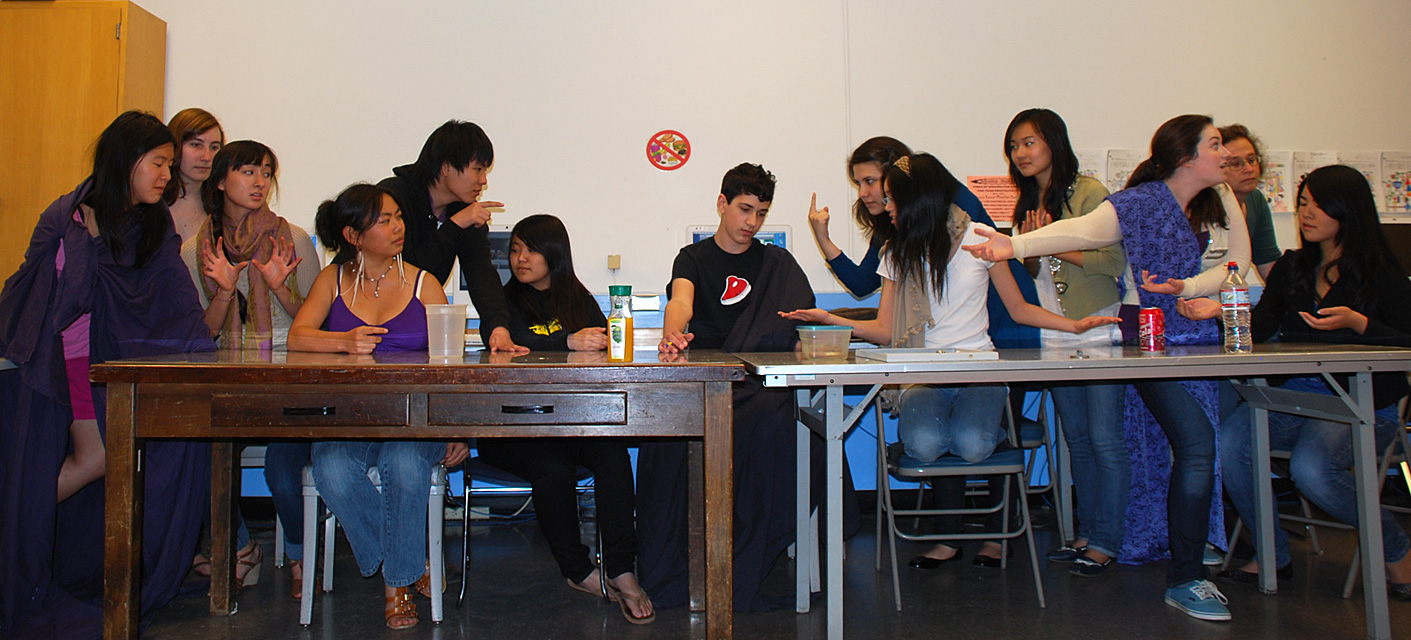The interview below is a part of a series on New Secondary Division Courses for 2012. Laura Shefler discusses her upcoming course, Art History. Read the course description here.
1. How did you become interested in art and art teaching?
I have been fascinated by art for as long as I can remember. Most of us are, as young children. In preschool, we linger over picture books or compete for the crayons in the basket. I teach to help people remember why they should care about art. It is something that belongs to all of us, part of our shared human history as far back as the cave painters and probably much further.
2. Do you expect students to have an art background before taking this class? What other hobbies or academic interests might indicate a good fit for Art History?
Students do not need any special background in art in order to take this course. Those who are well informed about aspects of art history will expand upon their knowledge. Those who are new to the topic will come in with a different set of advantages: fresh eyes and an open mind.
The study of art and architecture appeals to many other interests. Most clearly, it has a lot to offer to history buffs. If you want to know how Charlemagne transformed himself from Frankish King to Holy Roman Emperor, take a look at the magnificent marble chapel he built for himself at Aachen. At the same time, looking at art can make the past more interesting even for those who don’t love history. If you think that the Battle of Hastings is just a boring set of dates and names, check out the action in the Bayeux Tapestry, a 230-foot-long embroidery from 1070s that provided a precedent for the modern comic book.
At the same time, art history has ties with other, more technical subjects. When you read about Shang Dynasty bronze casting methods or the role of oxidation in the manufacture of Greek pottery, you are also researching the role of science in human development. Sophisticated mathematical concepts define Islamic tilework as well as the kolam patterns that some Indian women paint with rice powder on the ground.
3. You’ve taught AP Art History with us in the past. Will this course be useful to students hoping to pursue AP Art History in the future? How else will the study of Art History aid students’ future studies?
In this class students will also learn about psychology, sociology, and even economics. Just as importantly, they will acquire stronger writing and critical thinking skills that will enhance their academic abilities across the board. Art history is a vast topic: no matter how much you know about it, you will always encounter unfamiliar images and ideas. Students will emerge from this course with a powerful set of concepts and vocabulary that will help them to approach new topics at the AP level, in college and beyond.

The great thing about studying art history is that it incorporates both logic and imagination. You have to be able to picture the world from someone else’s point of view. At the same time, you have to be able to distinguish between entertaining stories and reliable facts. We may think we know that Van Gogh was insane, that he cut off his own ear, but if you look a little closer at Vincent’s life you’ll see that there is in fact a lot of debate about these supposed truths.
An wonderful thing about art history is the way it requires that you question your own assumptions, for instance that art should be about something or that it has to be beautiful.
Consider Donatello’s early Renaissance sculpture of Mary Magdalene. To modern eyes, she looks like an unhealthy and perhaps unsavory character, bony and hollow eyed. She dressed in a tunic made out of her own hair, and our first reaction may be, “Oh, gross,” but this is where the history comes in. Donatello’s audience would undoubtedly have had a different response. In his time, Christians would have seen Mary’s ravaged body as a sign of her holiness. Her poverty conveys her extreme devotion to God.
4. Describe a topic or activity that you can’t wait to do with the kids this summer.
I am looking forward to working with students to make connections among art traditions from around the world. Artists working today have access to visual influences from so many movements and cultures. In their research projects, students will pick a modern or contemporary work of art and try to identify those influences. What did the artist absorb from the present and the past, and how did he or she transform older approaches into something startling or captivating and new? Through these projects, I expect to learn just as much as the students do.
